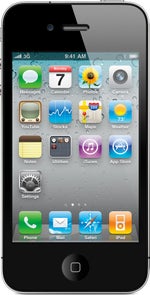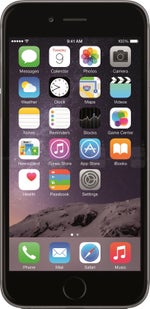A retrospective: here's how the Apple iPhone evolved over the past 8 years

On January 9, 2007, former Apple CEO Steve Jobs made a historical product announcement. The device he introduced to the world was a revolutionary new phone, a widescreen iPod with touch controls, and a powerful internet communicator. These were not separate devices, however; the first-gen iPhone was all that, all the while looking great in its metal-made outfit. And we're pretty sure you know what happened next. The iPhone didn't only become a smashing hit. It single-handedly defined what a modern smartphone should look and feel like. It is, without a doubt, today's most highly desired smartphone, and the announcement of each new model is an event anticipated by millions of fans.
Speaking of iPhone announcements, the iPhone 6s and the iPhone 6s Plus are expected to be made official at the September 9 Apple event. The time seems ideal for a quick retrospective on the iPhone's evolution, so without further ado, let us embark on a journey through the history of Apple's iconic smartphone.
The iPhone that got it all started
In June 2007, Apple released its new phone exclusively on AT&T/Cingular and got the ground-breaking ball rolling. Unlike most other phones at that time, the first iPhone relied on a touchscreen interface. It had a large (for the time) 3.5-inch display, and the only button found on its front panel was the home key. And unlike most other smartphones at that time, the iPhone needed no stylus as its capacitive touchscreen and user interface were optimized for use with a finger. Apple's competitors were quick to dismiss the iPhone as a product with no potential due to its lack of a physical keyboard, but the market thought otherwise. The iPhone didn't only sell well. It paved the way for a revolution.
The iPhone 3G: now with App Store, push notifications, and GPS
The first iPhone did shake the smartphone market, but it did leave plenty of room for improvement. And improvements were what Apple delivered soon after the iPhone's debut. The iPhone 3G came out in 2008, bringing along a slight external redesign. It had a plastic back instead of a metal one to pick up radio signals better. But the really significant changes concerned the phone's internal hardware and software. As its name implied, the iPhone 3G offered 3G data connectivity for much faster mobile data rates (its predecessor was limited to EDGE connectivity only). A GPS radio was also added. And on the software side of things, Apple introduced the App Store, where users could download third-party applications from. In addition, push notifications and Exchange support were implemented into the operating system. A whopping one million iPhone 3G units were sold during its launch weekend.
The iPhone 3GS, where "S" stands for speed
In June 2009, Apple announced the iPhone 3GS, which packed more processing power than its predecessor. The original's 412MHz processor had been replaced with a 600MHz chip alongside a faster GPU, and the RAM was doubled to 256MB. This allowed the new iPhone to deliver a smoother user experience – apps launched faster, games ran better, the UI was more responsive. The camera was treated to an upgrade as well. First and foremost, its resolution was bumped to 3MP for more detailed images. Also, the camera now had auto-focus, and the camera app allowed the focus area to be set with a tap. The phone came with a new version of the iPhone operating system which included voice controls, internet tethering, and turn-by-turn navigation.
The iPhone 4: resolutionary screen, iconic design
The iPhone 4 was a notable upgrade over the iPhone 3GS. First and foremost, it brought along an incredibly (for the time) pixel-dense display. While its 3.5-inch diagonal size was already nothing extraordinary, it packed a whopping 326 pixels per inch, and it took quite a while for another phone maker to beat that figure. Under its hood ticked an 800MHz Apple-designed A4 SoC, alongside 512MB of RAM. The iPhone 4 was also quite different from its predecessor in terms of design. Its front and back sides were made of glass while the frame surrounding the device was made of metal. This metal frame was actually part of the antenna system, which seemed like a clever solution, yet led to some serious reception issues. Remember the infamous "Antennagate" scandal? For those needing a refresher, the iPhone 4 would lose signal strength when held in a particular way. Nevertheless, the iPhone 4 was another success in Apple's book, and eventually, an upgraded model came along.
The iPhone 4s: same on the outside, new on the inside
At a glance, the iPhone 4s didn't seem any different from the iPhone 4. It did not suffer from the aforementioned antenna issues, however, and introduced quite a few hardware improvements. These included a faster, dual-core processor inside the A5 SoC and an 8MP camera which turned out to be one of the best at the time. As a matter of fact, it paved the way for the iPhone 4s to become the most popular camera on Flickr. People loved it for its speed and for the great images that it was capable of taking with minimum effort on the user's side. Plus, it could capture great video at 1080p resolution.
The iPhone 5 brought a larger screen, a slimmer design, and LTE connectivity
The iPhone 5 was announced in September of 2012. Unlike all previous iPhone models, it came with a 4-inch screen instead of a 3.5-inch one, all while retaining the 326ppi pixel density of its predecessor. Its design was improved as well. As a matter of fact, the iPhone 5 was the slimmer and ligher iPhone we had seen until that day. Under the hood was placed an even faster processor. The camera resolution still stood at 8MP, but a better DSP allowed it to take clearer images and more stable 1080p videos. Plus, this is when Apple added sweep panoramas to its camera app. We must also mention that the iPhone 5 was the first iPhone to support 4G LTE connectivity.
iPhone 5s: faster processor, Touch ID, iOS 7.0
Along with the iPhone 5s, Apple launched its seventh major iOS release. Its flat, colorful looks made it quite different from previous iOS versions, and reviews were mixed at the time, but eventually, people got accustomed to the platform's new look. Besides, it was made better than before, with the handy Control Center and 64-bit support. As for the iPhone 5s, it did not bring only the mandatory hardware upgrades, among which was a faster A7 processor. It introduced us to Touch ID – a fingerprint scanner embedded in the home screen. Also, this was the first iPhone to come in gold, in addition to white and black. The camera resolution was not altered, but the flash was improved by adding a second, warm LED that helped to produce more natural light in dark shots.
iPhone 5c: for the colorful
At the very same event, Apple also introduced the iPhone 5c – a plastic-made iPhone that was available in 5 fun colors. On a hardware level, it was pretty similar to the iPhone 5, save for its improved front-facing camera. This particular iPhone didn't grow quite as popular as other iPhone models, and we have yet to see a proper successor to it.
iPhone 6: bigger, bolder, faster
Eventually, the inevitable happened – Apple released a bigger iPhone in 2014. The iPhone 6 bumped the screen size to 4.7 inches and the resolution to 750 by 1334 pixels to maintain the 326 ppi figure. At the same time, it is even thinner than the iPhone 5s, at only 6.9 millimeters. To no surprise, the iPhone 6 also brings improvements under the hood, including a faster Apple A8 SoC and an even better 8MP camera with super-fast auto-focus. On the software side of things, the refined iOS 8 has been running the whole show since launch, but is about to be replaced by iOS 9 in the coming days.
iPhone 6 Plus: for those who won't settle for any less
And speaking of bigger iPhones, we have the iPhone 6 Plus, which got announced alongside the 4.7-inch iPhone 6. The Plus is an even larger model, sporting a 5.5-inch, 1080p display. On a hardware level, it is more or less identical to the iPhone 6, the only differences being its optically-stabilized camera, the bigger battery, and the higher display resolution.
iPhone 6s and iPhone 6s Plus: what to expect from the newest iPhones
So, what is Apple going to announce on September 9? Rumor has it that successors to the iPhone 6 and iPhone 6 Plus are to be announced. These might be called the 6s and the 6s Plus, should Apple choose to stick with its current naming scheme. The two phones are highly likely to retain the size, looks, and design of their respective predecessors, but on the inside, the hardware is expected to be given a serious boost. The camera of choice, for example, is rumored to be a 12MP unit with 4K video support. The new SoC will probably be accompanied by 2GB of RAM instead of just one gig. The housing of the handsets is said to be made of 7000-series aluminum, which is tougher. And the display could be given Force Touch abilities, the kind of which we first saw on the Apple Watch. The two phones' commercial release is extremely likely to coincide with the rollout of iOS 9. For more of what we think we know about the two, feel free to explore our iPhone 6s and iPhone 6s Plus rumor round-up.
Size comparison: all iPhones - from the first generation to the 6 Plus
Follow us on Google News
































Things that are NOT allowed:
To help keep our community safe and free from spam, we apply temporary limits to newly created accounts: